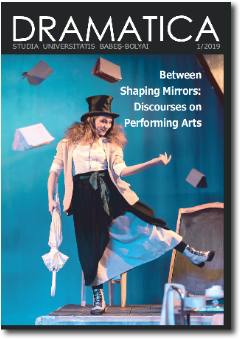THE RHETORICAL AND STYLISTIC EVOLUTION OF THEATRE REVIEWS AT THE END OF THE 50S. THE DISOBEDIENT – CASE STUDY
THE RHETORICAL AND STYLISTIC EVOLUTION OF THEATRE REVIEWS AT THE END OF THE 50S. THE DISOBEDIENT – CASE STUDY
Author(s): Miruna RuncanSubject(s): Theatre, Dance, Performing Arts, Fine Arts / Performing Arts, Visual Arts, Film / Cinema / Cinematography, History of Art
Published by: Studia Universitatis Babes-Bolyai
Keywords: Theatre History; Theatre Criticism; Cultural Policies; Arts in Communist Romania;
Summary/Abstract: This paper aims at analysing the way in which the structure and stylistics of theatre review influenced the evolution of critical thinking during the short thaw that took place in all Socialist countries after Nikita Khrushchev’s February 1956 speech in which the Soviet leader exposed the crimes of Stalin’s rule. We therefore analysed the reviews and essays of some of the most dynamic and most professional young critics who published in the Teatrul Journal: I. D. Sîrbu, Șt. Aug. Doinaș, Ecaterina Oproiu and Florian Potra. Symptomatically, all the four critics subsequently moved away from this profession, for dramatic reasons related to the political circumstances, and during the following decade, they became famous writers of poetry, literary criticism, dramaturgy or film criticism.
Journal: Studia Universitatis Babes-Bolyai - Dramatica
- Issue Year: 64/2019
- Issue No: 1
- Page Range: 47-62
- Page Count: 16
- Language: English

